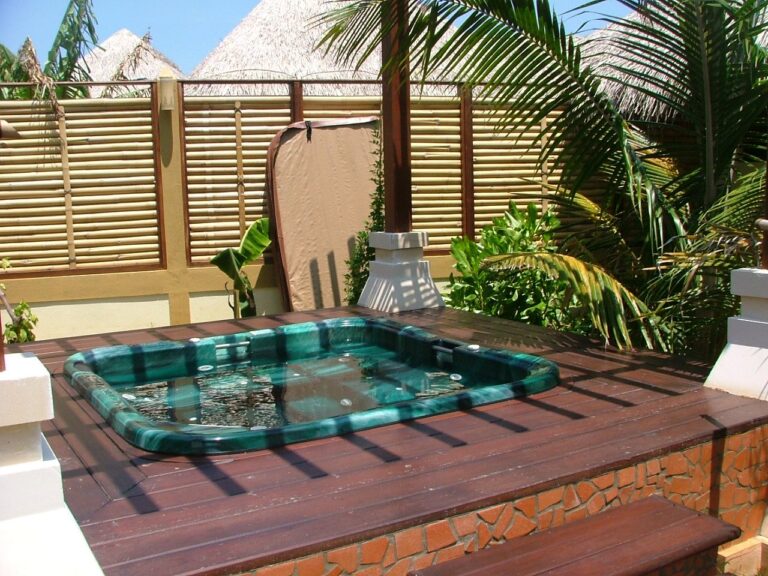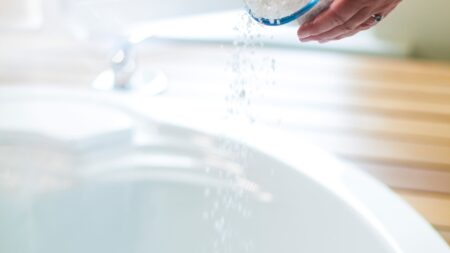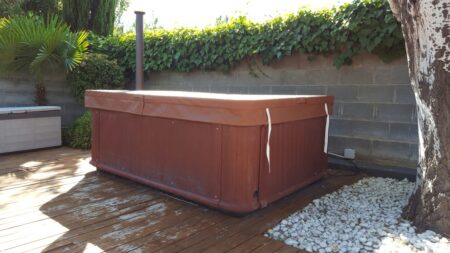One of the most important things that most first-time hot tub buyers overlook is how their new hot tub will keep the water clean and clear. While definitely not as exciting as other hot tub features, the hot tub’s filtration system is perhaps its most critical component.
Hot tubs with good filtration systems keep the water clean and clear with little maintenance. Without frequent maintenance, hot tubs with poorly designed filtration systems will easily break down. Before we get into the differences between the various hot tub filtration systems, let’s first look at why hot tubs need a filter in the first place.
Why do hot tubs need a filtering system?
Without a filter, the water in the whirlpool tub would fill up with pollutants; quickly making the whirlpool unusable. These contaminants come from outside sources (tree leaves, dust, etc…) and from the bather using the hot tub (sunscreen, make-up, deodorant, etc.). If left, they can cause a variety of problems; from cloudy water, to increased chemical use, to the growth of an algae bloom (green water).
To combat this, hot tubs come equipped with a filtration system. These systems work by pumping the hot tub water through a microfilter, which traps contaminants and allows them to be easily removed. In modern hot tubs, this filtering process is done automatically with pre-programmed “filtration cycles” that typically run between 4 and 24 hours per day.
While there are many different hot tub filtration systems used in the industry, these different systems can be grouped into two categories; suction side filtration and pressure side filtration.
Traditional whirlpool bath filtration systems.
To keep the water clean and safe to use, most hot tubs manufactured today use a “suction side” filtration system. In this system, the microfilter is placed inside the “skimmer” (an equipment present in most private pools, it is part of the filtration equipment together with the filter itself, the jets, the sump etc.) of the hot tub. The hot tub pump draws water from the surface through this skimmer. The water then passes through the filter basket, which removes larger debris such as leaves, then through the micro filter, through the pump, and then back into the main body of water through the massage jets.
Pros
The advantage of this filtration system is that it is cheap to install. This helps to keep the purchase price of the hot tub down.
Cons
- As the water only foams on the surface, any heavier debris such as sand will fall to the bottom of the whirlpool tub. This heavier dirt needs to be removed manually.
- It is not very efficient. To properly filter the water in a whirlpool tub, suction-side filtration systems must run a minimum of 8 hours per day, with most requiring 12 to 24 hours per day. The longer these systems run, the higher the energy cost.
Pressure side filtration
While there is nothing wrong with suction-side filtration systems, there is definitely room for improvement. With this in mind, some whirlpool companies have developed what is known as “pressure side” filtration.
A true pressure side filtration system differs from conventional suction side filtration in several ways.
- The microfilter is removed from the skimmer and placed in a delicate container.
- The microfilter is placed after the pump (on the “pressure side” of the pump).
- A floor vacuum is added to the bottom of the whirlpool tub.
These changes are designed to mimic the ultra-efficient filtration system of a hot tub. The biggest change with this new system was that the water now flowed from the pump to the filter, rather than the water flowing from the filter to the pump.
In a true pressure side filtration system, such as the self-cleaning system, the pump draws water through the skimmer and the floor of the empty hot tub. The skimmer basket and hot tub floor vacuum and trap larger debris, such as leaves, which can damage the pump. The water then flows through the pump and is forced through the microfilter under pressure. The microfilter then filters out dirt and smaller debris, and the clean water returns to the hot tub through the jets.
Pros
- The built-in floor vacuum allows the whirlpool tub to filter out heavy debris such as sand. This means you will need to spend much less time manually cleaning the whirlpool tub.
- Pressure-side filtration is much more efficient than suction-side filtration. The best pressure-side filtration systems, such as those found in self-cleaning hot tubs, are capable of filtering water in as little as 15 minutes! This reduces the filtration cycle run time to only 2-4 hours per day; saving you money on energy costs.
- Pressure side filtration systems generally use a dedicated filtration pump to filter the water, rather than jet pumps. These pumps are usually much smaller and more energy efficient than jet pumps, saving you even more on your energy bill. Filtration pumps used in self-cleaning hot tubs, for example, use about 1/6 of the power of a traditional jet pump.
- Pressure side filtration is able to filter so effectively that it reduces the need for chemicals such as clarifiers. Not only will this save you money on chemical costs, but it also means that you will not have to drain and refill the hot tub as often. Hot tubs must be drained when too many “dissolved solids” are introduced into the water. These dissolved solids are mostly minerals that enter the water from both bathers and chemicals. By reducing the amount of chemicals you add to the water, you also reduce the amount of dissolved solids in the water, which means fewer water changes.
Cons
Pressure-side filtration systems cost more to manufacture, which increases the purchase cost of the hot tub. However, this additional cost is more than offset over the lifetime of the hot tub.
To conclude
Although most people tend to overlook it, the filtration system is perhaps the most important component of a hot tub. A hot tub with a poorly designed filtration system will cost much more to operate and require more maintenance than one with a well-designed filtration system. Not only that, hot tubs with poor filtration are also much more susceptible to problems such as cloudy or green water. These problems not only cost you money, but they also cost you time, as you can’t use your hot tub while you fix these problems.
Although more expensive than traditional suction-side filters, pressure filtration systems, such as those found in self-cleaning hot tubs, operate at a fraction of the cost of traditional filtration systems. They also require much less maintenance than suction-side filtration systems, leaving you more time to enjoy your hot tub!





